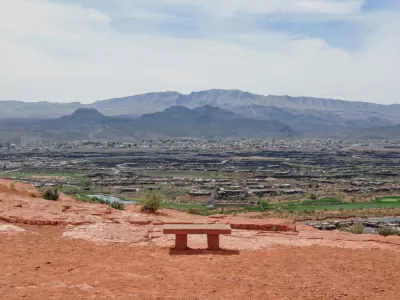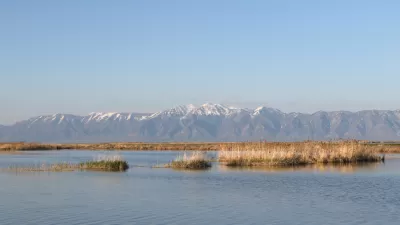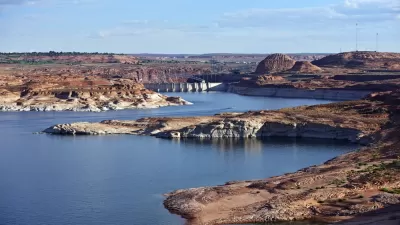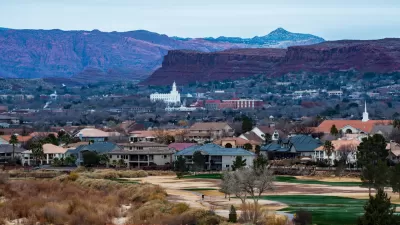Cheap water flows freely to the golf courses of St. George, Utah, but all the new residents mean it’s going to have to increase supply or reduce demand—or both.

St. George, Utah was recently named the fastest growing metropolitan area in the country; it is also in one of the driest climates in the country, which means that providing enough water will be an enormous challenge, writes Jake Bullinger at CityLab.
As is the case with other growing desert burgs, St. George grapples with water-supply issues. But the challenge here is unique. Remarkably cheap rates mean that residents of an area with only eight inches of annual rainfall are using tremendous amounts of water. An average St. George resident uses more than twice as much water as the average citizen of Los Angeles.
As in many dry cities, one of the most significant uses of water is outdoor irrigation (St. George has traditionally been a retirement community, with lots of golf courses). In some places, watering all that grass would be an expensive proposition, but in most of Utah, untreated "secondary water" is nearly free.
The question for St. George now is whether to push forward with a major infrastructure project that would provide a new source of water, or to focus on reducing demand through conservation.
The project—a pipeline that would bring more water from Lake Powell—is hugely expensive, but even if it weren’t, there’s a question of how much more water can be wrung from the Colorado River, which is shrinking in the short term due to drought and in the long term due to climate change.
“In this blossoming desert city,: Bullinger writes, “leaders have a choice: Do they let the roses go brown, or pay exorbitantly to keep them?”
FULL STORY: America's Fastest-Growing Urban Area Has a Water Problem

Study: Maui’s Plan to Convert Vacation Rentals to Long-Term Housing Could Cause Nearly $1 Billion Economic Loss
The plan would reduce visitor accommodation by 25,% resulting in 1,900 jobs lost.

North Texas Transit Leaders Tout Benefits of TOD for Growing Region
At a summit focused on transit-oriented development, policymakers discussed how North Texas’ expanded light rail system can serve as a tool for economic growth.

Why Should We Subsidize Public Transportation?
Many public transit agencies face financial stress due to rising costs, declining fare revenue, and declining subsidies. Transit advocates must provide a strong business case for increasing public transit funding.

How to Make US Trains Faster
Changes to boarding platforms and a switch to electric trains could improve U.S. passenger rail service without the added cost of high-speed rail.

Columbia’s Revitalized ‘Loop’ Is a Hub for Local Entrepreneurs
A focus on small businesses is helping a commercial corridor in Columbia, Missouri thrive.

Invasive Insect Threatens Minnesota’s Ash Forests
The Emerald Ash Borer is a rapidly spreading invasive pest threatening Minnesota’s ash trees, and homeowners are encouraged to plant diverse replacement species, avoid moving ash firewood, and monitor for signs of infestation.
Urban Design for Planners 1: Software Tools
This six-course series explores essential urban design concepts using open source software and equips planners with the tools they need to participate fully in the urban design process.
Planning for Universal Design
Learn the tools for implementing Universal Design in planning regulations.
City of Santa Clarita
Ascent Environmental
Institute for Housing and Urban Development Studies (IHS)
City of Grandview
Harvard GSD Executive Education
Toledo-Lucas County Plan Commissions
Salt Lake City
NYU Wagner Graduate School of Public Service





























